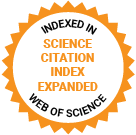Journal of Medical Internet Research
The leading peer-reviewed journal for digital medicine and health and health care in the internet age.
Editor-in-Chief:
Gunther Eysenbach, MD, MPH, FACMI, Founding Editor and Publisher; Adjunct Professor, School of Health Information Science, University of Victoria, Canada
Impact Factor 5.8 CiteScore 14.4
Recent Articles

Lumbar spinal stenosis (LSS) is a major cause of pain and disability in older individuals worldwide. Although increasing studies of traditional machine learning (TML) and deep learning (DL) were conducted in the field of diagnosing LSS and gained prominent results, the performance of these models has not been analyzed systematically.

Mobile health (mHealth) interventions have gained popularity in augmenting psychiatric care for adults with psychosis. Interest has grown in leveraging mHealth to empower individuals living with severe mental illness and extend continuity of care beyond the hospital to the community. However, reported outcomes have been mixed, likely attributed in part to the intervention and adopted outcomes, which affected between-study comparisons.

Structured and standardized documentation is critical for accurately recording diagnostic findings, treatment plans, and patient progress in health care. Manual documentation can be labor-intensive and error-prone, especially under time constraints, prompting interest in the potential of artificial intelligence (AI) to automate and optimize these processes, particularly in medical documentation.

The development of wearable solutions for tracking upper limb motion has gained research interest over the past decade. This paper provides a systematic review of related research on the type, feasibility, signal processing techniques, and feedback of wearable systems for tracking upper limb motion, mostly in rehabilitation applications, to understand and monitor human movement.

As health care continues to evolve with technological advancements, the integration of artificial intelligence into clinical practices has shown promising potential to enhance patient care and operational efficiency. Among the forefront of these innovations are large language models (LLMs), a subset of artificial intelligence designed to understand, generate, and interact with human language at an unprecedented scale.

Previous studies have shown that electrocardiographic (ECG) alarms have high sensitivity and low specificity, have underreported adverse events, and may cause neonatal intensive care unit (NICU) staff fatigue or alarm ignoring. Moreover, prolonged noise stimuli in hospitalized neonates can disrupt neonatal development.


The maintenance of a healthy lifestyle significantly influences pregnancy outcomes. Certain pregnant women are more at risk of engaging in unhealthy behaviors due to factors such as having a low socioeconomic position and low social capital. eHealth interventions tailored to pregnant women affected by these vulnerability factors can provide support and motivation for healthier choices. However, there is still a lack of insight into how interventions for this target group are best designed, used, and implemented and how vulnerable pregnant women are best reached.

Health education and promotion are recognized as effective strategies for fostering healthy ageing, reducing the disease burden, and addressing health inequalities, particularly when delivered through digital media. Primary care workers are often regarded as the key providers of these interventions. Despite the strong practical significance and substantial individual demand, the use of digital media for delivering health promotion practices was not widespread in China. One of the main challenges identified is the providers’ inadequate capacities. However, little is known about the digital capacity for health promotion among primary care workers.
Preprints Open for Peer-Review
Open Peer Review Period:
-
Open Peer Review Period:
-
Open Peer Review Period:
-




















